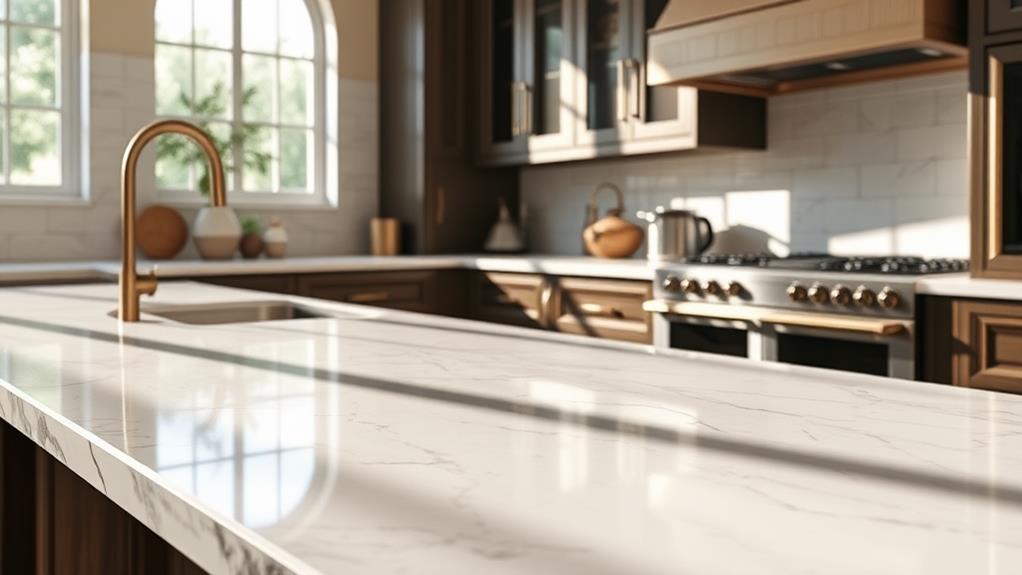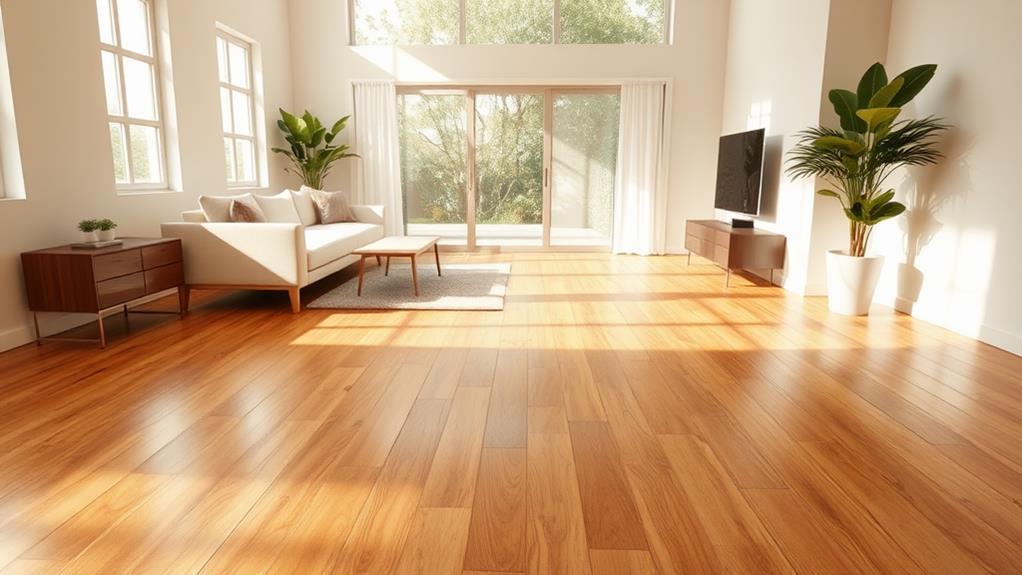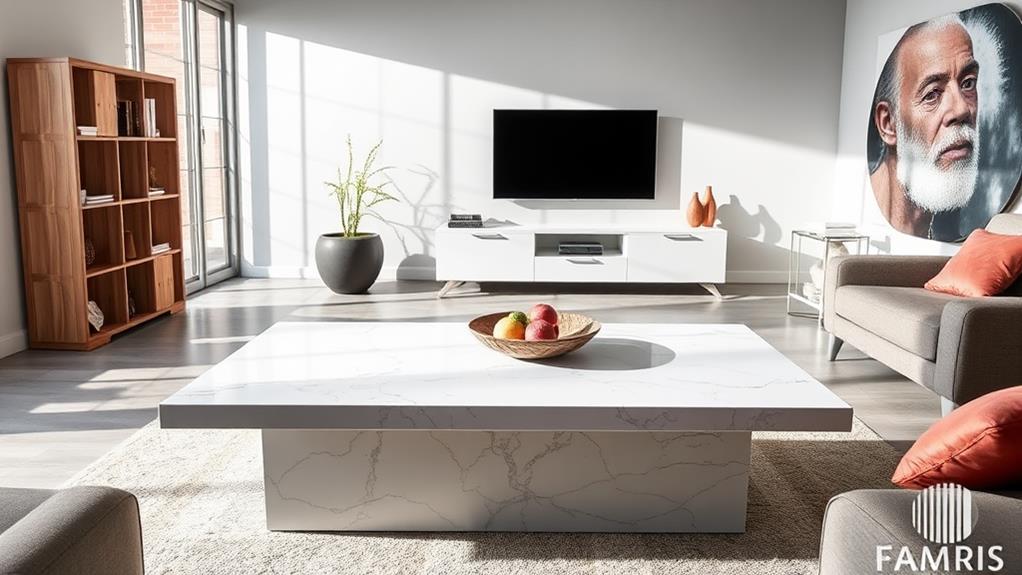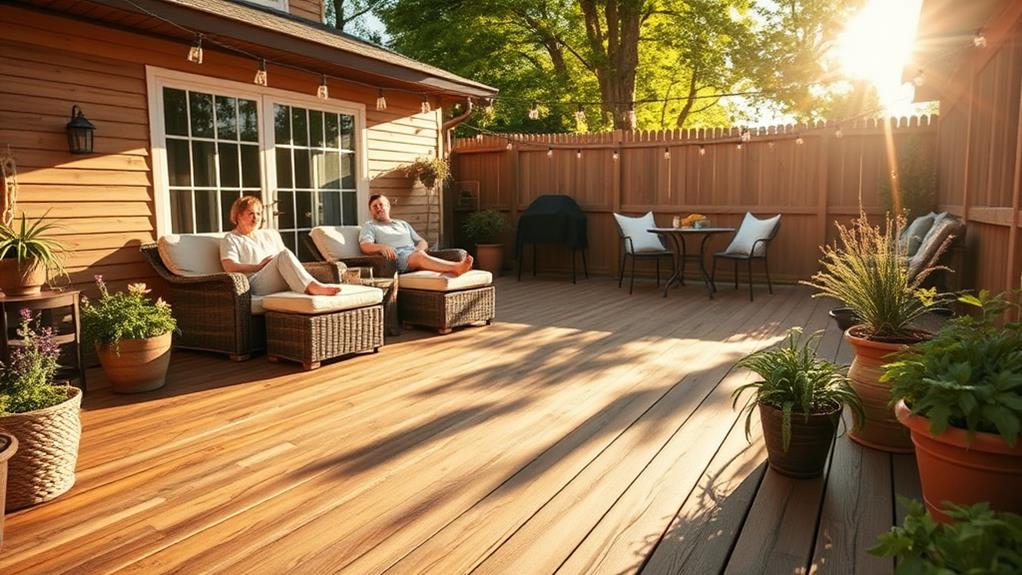Affordable alternatives to expensive materials offer savvy consumers the opportunity to achieve high-end aesthetics without breaking the bank. Faux marble countertops, synthetic leather goods, and engineered wood flooring provide cost-effective options that closely mimic their pricier counterparts. Cubic zirconia jewelry and laminate furniture finishes offer budget-friendly alternatives to diamonds and high-end surfaces. Artificial plants, imitation fur accessories, and vinyl wallpaper provide stylish decor options at a fraction of the cost. Composite decking materials offer durability and low maintenance for outdoor spaces. These alternatives not only save money but also provide practical benefits in terms of durability and ease of maintenance. Exploring these options can lead to surprising discoveries in budget-friendly luxury.
Faux Marble Countertops

Faux marble countertops have taken off in recent years as a cost-effective alternative to genuine marble surfaces. These imitation materials, typically made from engineered stone or laminate, offer the luxurious appearance of marble without the hefty price tag. Manufacturers have perfected techniques to replicate the intricate veining and color variations found in natural marble, creating convincing reproductions that can fool even discerning eyes.
One popular option is quartz engineered stone, which combines ground quartz with resins and pigments to create a durable, non-porous surface. This material not only mimics the look of marble but also offers superior stain and scratch resistance.
Another alternative is high-quality laminate, which uses advanced printing technology to reproduce marble patterns on a more affordable substrate.
Faux marble countertops also address some of the drawbacks of genuine marble, such as its tendency to stain and etch. These alternatives require less maintenance and are often more resistant to everyday wear and tear. For homeowners seeking the elegance of marble on a budget, faux options provide an attractive compromise between aesthetics and practicality, allowing for a high-end look at a fraction of the cost.
Synthetic Leather Goods
In the realm of affordable alternatives, synthetic leather goods have emerged as a popular choice for budget-conscious consumers seeking the look and feel of genuine leather. Also known as faux leather or pleather, these materials are typically made from polyurethane (PU) or polyvinyl chloride (PVC) and offer several advantages over their authentic counterparts.
Synthetic leather is significantly less expensive than genuine leather, making it an attractive option for wallets, bags, shoes, and furniture. It's also more durable and resistant to water damage, stains, and scratches. Additionally, synthetic leather is easier to clean and maintain, often requiring only a damp cloth for regular upkeep.
From an ethical standpoint, faux leather appeals to consumers who avoid animal products. It's also more environmentally friendly, as its production requires fewer resources and chemicals compared to traditional leather tanning processes.
However, synthetic leather does have drawbacks. It may not develop the same patina or character as genuine leather over time, and some varieties may not breathe as well, potentially causing discomfort in clothing or upholstery applications. Despite these limitations, synthetic leather remains a viable and cost-effective alternative for many consumers.
Engineered Wood Flooring

Engineered wood flooring offers a cost-effective alternative to solid hardwood, providing the aesthetic appeal of natural wood at a fraction of the price. This innovative flooring option consists of multiple layers, with a top veneer of real wood and a core made of plywood or high-density fiberboard. The layered construction enhances stability and resistance to moisture, making it suitable for areas where solid hardwood may not be ideal.
One of the main advantages of engineered wood flooring is its versatility. It can be installed over various subfloors, including concrete, and is compatible with underfloor heating systems. The wide range of wood species, finishes, and plank sizes available allows homeowners to achieve their desired look without compromising on quality or durability.
Maintenance of engineered wood flooring is relatively simple, requiring regular sweeping and occasional damp mopping. While it may not last as long as solid hardwood, many engineered wood floors can be refinished at least once, extending their lifespan. When considering the initial cost, installation ease, and long-term performance, engineered wood flooring presents an attractive option for those seeking the warmth and elegance of wood without the hefty price tag.
Cubic Zirconia Jewelry
Moving from flooring to personal adornments, cubic zirconia jewelry offers an affordable alternative to diamond pieces. This synthetic gemstone closely mimics the appearance of diamonds, featuring similar brilliance and fire at a fraction of the cost. Cubic zirconia is composed of zirconium dioxide, created in laboratories under controlled conditions to ensure consistency and quality.
One of the primary advantages of cubic zirconia is its versatility. It can be produced in various colors, sizes, and cuts, allowing for a wide range of jewelry designs. Unlike natural diamonds, which are graded based on the "Four Cs" (cut, clarity, color, and carat weight), cubic zirconia stones are typically flawless and colorless, making them visually appealing to many consumers.
While cubic zirconia lacks the rarity and investment value of diamonds, it serves as an excellent option for those seeking affordable luxury or costume jewelry. Its durability, though not equal to that of diamonds, is sufficient for everyday wear when properly cared for. As a result, cubic zirconia has become a popular choice for engagement rings, pendants, earrings, and other jewelry pieces, allowing individuals to enjoy the look of diamonds without the hefty price tag.
Laminate Furniture Finishes

From high-end furniture to budget-friendly alternatives, laminate finishes have revolutionized the furniture industry. These synthetic materials mimic the appearance of expensive wood grains, stone, and other high-end surfaces at a fraction of the cost. Laminate finishes are composed of multiple layers, including a decorative layer and a protective top coat, which are fused together under high pressure and heat.
The versatility of laminate finishes allows manufacturers to create a wide range of designs, from classic wood patterns to contemporary abstract designs. This flexibility enables consumers to achieve desired aesthetics without breaking the bank. Laminate furniture is also highly durable, resistant to scratches, stains, and fading, making it ideal for high-traffic areas and households with children or pets.
Installation of laminate finishes is typically faster and less labor-intensive than traditional materials, reducing overall costs. Additionally, laminate furniture is often lighter and easier to move, making it a practical choice for renters or those who frequently redecorate. While purists may argue that laminate lacks the authenticity of natural materials, advancements in technology have significantly improved its realism, making it an increasingly popular choice for budget-conscious consumers seeking stylish home furnishings.
Artificial Plants and Flowers
Realistic artificial plants and flowers have become a popular, cost-effective alternative to their living counterparts. These synthetic options offer numerous advantages, including minimal maintenance, longevity, and consistent appearance. Modern manufacturing techniques have greatly improved the quality and realism of artificial greenery, making it increasingly difficult to distinguish from live plants.
Artificial plants are available in a wide variety of species, sizes, and styles, allowing for versatile decorating options in both residential and commercial spaces. They are particularly useful in areas with limited natural light or in environments where live plants may struggle to thrive. Additionally, artificial plants eliminate concerns about allergies, pesticides, and water damage to surfaces.
While the initial cost of high-quality artificial plants may be higher than some live plants, they prove more economical in the long run due to their durability and lack of ongoing care requirements. For those seeking to create a lush, green environment without the time commitment and expertise needed for live plant care, artificial options provide an attractive and practical solution. As technology continues to advance, the realism and appeal of artificial plants and flowers are likely to improve further.
Imitation Fur Accessories

Imitation fur accessories offer a cruelty-free and cost-effective alternative to genuine animal furs in fashion and home decor. These synthetic materials have come a long way in recent years, closely mimicking the look and feel of real fur while addressing ethical concerns and reducing environmental impact.
Modern imitation fur is typically made from acrylic, modacrylic, or polyester fibers, which are carefully crafted to replicate the texture and appearance of various animal furs. Manufacturers use advanced techniques to create realistic-looking fur patterns, colors, and lengths, making it increasingly difficult to distinguish from genuine fur at a glance.
Imitation fur accessories are widely available in the fashion industry, including coats, jackets, hats, gloves, and trims for clothing and footwear. In home decor, faux fur throws, pillows, and rugs add warmth and luxury to interiors without the high cost or ethical implications of real fur. These products are often more durable and easier to clean than their authentic counterparts, making them practical choices for everyday use.
Vinyl Wallpaper
Vinyl wallpaper stands out as a versatile and cost-effective alternative to traditional paper-based or high-end wallcoverings. This durable material offers a wide range of designs, textures, and patterns that can mimic more expensive options like silk, grasscloth, or even hand-painted murals. Vinyl's water-resistant properties make it ideal for high-moisture areas such as kitchens and bathrooms, where traditional wallpapers may deteriorate quickly.
The ease of installation and maintenance further enhances vinyl wallpaper's appeal. Many vinyl options are pre-pasted or feature peel-and-stick technology, simplifying the application process for DIY enthusiasts. Cleaning is typically as simple as wiping with a damp cloth, making it a practical choice for busy households or commercial spaces.
Advancements in printing technology have significantly improved the visual quality of vinyl wallpapers. High-resolution digital printing allows for intricate designs and photorealistic imagery, bridging the gap between affordable alternatives and premium wallcoverings. Additionally, textured vinyl options can provide depth and dimension to walls, creating a luxurious ambiance without the hefty price tag of natural materials or custom finishes.
Composite Decking Materials

Durability meets affordability in composite decking materials, offering homeowners an attractive alternative to traditional wood decking. These engineered products combine recycled wood fibers and plastic, resulting in a low-maintenance option that resists warping, splitting, and fading. Unlike natural wood, composite decking doesn't require regular staining or sealing, saving time and money on upkeep.
Composite decking comes in a variety of colors and textures, mimicking the appearance of exotic hardwoods without the associated high costs or environmental concerns. While the initial investment may be higher than pressure-treated lumber, the long-term savings in maintenance and replacement costs make it an economical choice.
Installation of composite decking is similar to wood, utilizing standard tools and techniques. Many manufacturers offer hidden fastener systems for a sleek, seamless look. Some composite materials are designed with enhanced slip resistance and UV protection, ensuring safety and longevity.
As technology advances, newer composites incorporate bamboo fibers or mineral-based compounds, further improving durability and eco-friendliness. With its combination of aesthetics, performance, and value, composite decking continues to gain popularity among homeowners seeking a balance between luxury and practicality in their outdoor living spaces.
Frequently Asked Questions
How Do Affordable Alternatives Impact the Environment Compared to Genuine Materials?
Affordable alternatives often have a mixed environmental impact. While they may reduce resource extraction and manufacturing costs, some can be less durable or recyclable. The overall environmental effect depends on factors like production methods, lifespan, and disposal practices.
Can Professionals Easily Distinguish Between Authentic and Imitation Products?
Like a skilled detective examining subtle clues, professionals often discern authentic from imitation products. Their trained eyes recognize nuances in craftsmanship, material quality, and finishing details. However, as imitations improve, distinguishing becomes increasingly challenging, even for experts.
Are There Health Concerns Associated With Using Synthetic Materials in Homes?
Certain synthetic materials used in homes may pose health concerns, including off-gassing of volatile organic compounds (VOCs) and potential allergens. Proper ventilation and selecting low-emission products can mitigate risks. Consult expert resources for specific material safety information.
Do Fake Materials Affect a Property's Resale Value Differently Than Genuine Ones?
Fake materials can impact a property's resale value differently than genuine ones. While high-quality synthetic alternatives may offer cost savings, potential buyers often prefer authentic materials, potentially affecting the property's perceived value and marketability during resale.
What Are the Legal Implications of Selling Imitation Products as Authentic?
Selling imitation products as authentic is illegal and constitutes fraud. This practice can result in severe legal consequences, including criminal charges, fines, and civil lawsuits. Businesses engaging in such deception may face reputation damage and potential closure.
Conclusion
Affordable alternatives offer practical solutions for cost-conscious consumers. From faux marble to synthetic leather, engineered wood to cubic zirconia, these options provide aesthetics without extravagance. Laminate finishes, artificial plants, and imitation fur accessories further expand budget-friendly choices. Vinyl wallpaper and composite decking materials round out the array of substitutes. By embracing these alternatives, individuals can achieve desired looks, maintain quality, and preserve budgets. Ultimately, these options demonstrate that style and savings can coexist harmoniously in modern living spaces.

